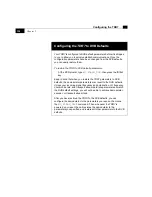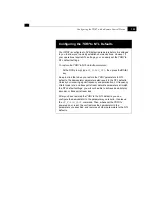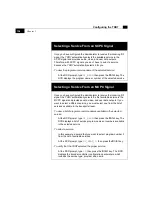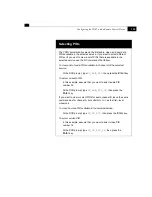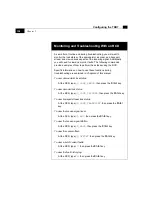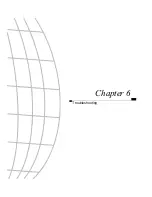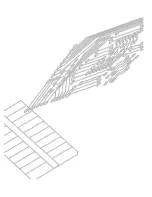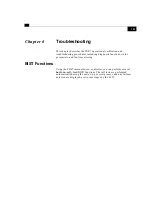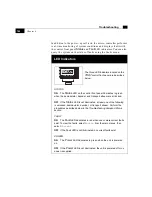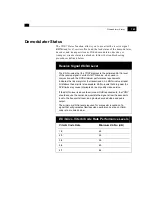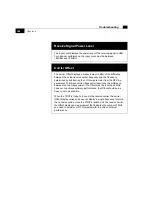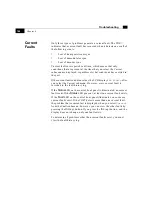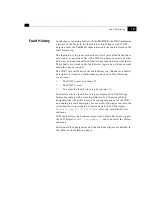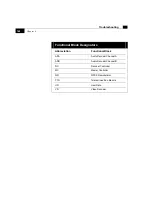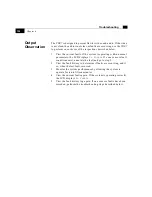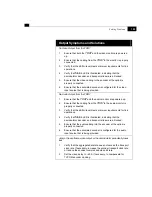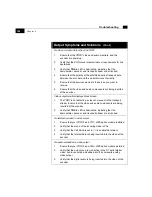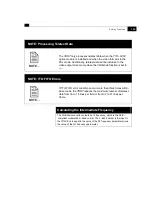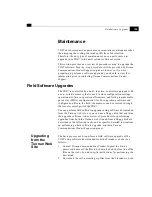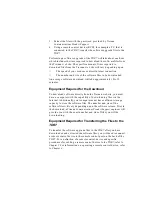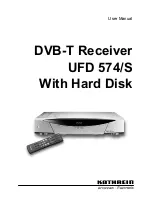
Chapter 6
146
Troubleshooting
Current
Faults
Only three types of problems generate a current fault. The TDR7
indicates that a current fault has occurred when it detects one or all of
the following events:
■
Loss of transport stream sync
■
Loss of demodulator sync
■
Loss of decoder sync
Current faults are reported real time, which means that only
conditions that are present at the time that you select the Current
submenu are displayed, regardless of what conditions have existed in
the past.
If the current fault conditions clear, the LCD displays
No Faults
after
you select the Current submenu. However, every current fault is
recorded in the fault history log.
If the
Status
LED on the control front panel is illuminated, no current
faults exist. If the
Status
LED goes out, at least one current fault exists.
If the
Fault
LED on the control front panel illuminates, one or more
current faults exist. If the TDR7 detects more than one current fault,
the problem that occurred last is displayed when you select
Current
from the Faults submenu; however, you can view the other faults by
pressing the
Inc
(up) button. If you press the
Inc
(up) button, and the
display does not change, only one fault exists.
To determine if problems other than current faults exist, you must
view the fault history log.
Summary of Contents for TDR7
Page 17: ...Chapter 1 TDR7 Overview...
Page 18: ......
Page 25: ...Chapter 2 Installing the TDR7...
Page 26: ......
Page 48: ...Chapter 2 34 Installing the TDR7...
Page 49: ...Chapter 3 Using the Control Front Panel...
Page 50: ......
Page 78: ......
Page 79: ...Chapter 4 Using a Remote Control Device Interface...
Page 80: ......
Page 111: ...Chapter 5 Configuring the TDR7...
Page 112: ......
Page 151: ...Chapter 6 Troubleshooting...
Page 152: ......
Page 169: ...157 Appendixes Maintenance Glossary Warranty Specifications and Index...
Page 170: ...I...
Page 176: ...164 Maintenance...

